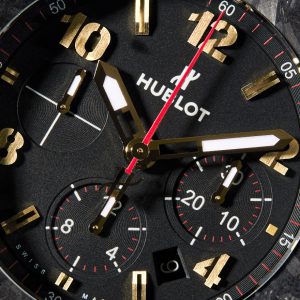How The Movement Frequency Affect The Timepieces. When owning a mechanical watch, you will be sure to find the denomination of ‘Hz’ (hertz) or ‘vph’ (vibrations per hour) among the watch’s attribute list. The number of ‘Hz’ or ‘vph’ refers to the frequency of the watch, which basically tells you how fast the movement is ticking.
Similar to how a clock’s pendulum sways from left to right to control the time, the components in the movement called the balanced wheel do the same job; instead of swinging from end to end, it oscillates clockwise and then counterclockwise. The speed at which the balanced wheel oscillates and adjusts the pulse of the watch is known as the frequency.
![]()
Read: What is Escapement and How It Works on a Watch?
The Balanced wheel oscillates (or ‘vibrates’) at a fixed amount of time per hour. The swing of the balanced wheel from the starting point and backwards again counts as one oscillation. To further define this, vibrations are counted as half of the oscillations, so one oscillation is equal to two vibrations. When you look at movement at 28,800 vph, that means the balanced wheel is making 14,400 oscillations every hour. Suffice it to say, the bigger the number, the faster the balanced wheel oscillates.
Most regular mechanical movements beat at 28,000vph (or 4Hz). However, more sophisticated movements have pushed the frequency limit. We can take Zenith’s El Primero chronograph movement, for example.
Introduced in 1969, this movement pulsed at a frequency of 36,000 vph. Since then, Zenith, along with several other brands, have relentlessly explored higher frequency movements. In recent years, we have seen movement at 72,000 vph (Breguet Caliber 574DR) and even 360,000 vph (TAG Heuer Carrera MikroPendulum).

The basic argument is that higher frequency movements can provide more precise accuracy. This is because the high frequency movement ‘recovers’ more quickly in the event of a shock to the watch.
In addition, on a chronograph watch, the high-frequency movement makes time measurement more accurate. In the 28,800 vph movement, the second hand beats eight times per second. Thus, the 28,800 vph chronograph movement can record an event time of up to the nearest 1/8 second. So, in a movement with 7,200,000 vph, the seconds hand beats a lot faster and is able to measure time more accurately – up to 1 / 2,000 second, to be precise.

Read: How to Find the Serial Number of Your Watch
While it is largely true that high-frequency movements tend to be more precise, speed is not the only determining factor. Other factors that affect timekeeping accuracy include the effects of gravity, friction between components and torque. In addition, high frequency movements are also prone to problems such as high energy depletion and rapid wear, which demands more frequent servicing.
High frequency movements often feature new construction materials and methods to complement the increased frequency. It can be said that the stability of a movement, not speed, is the key to optimal precision.





